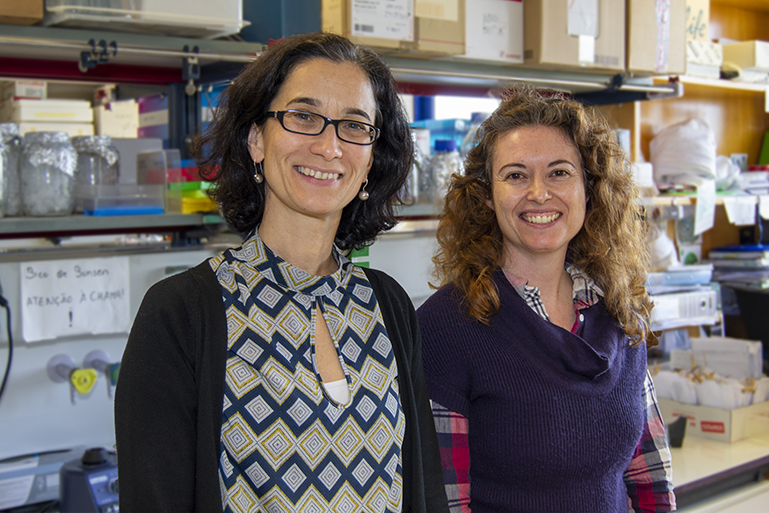Portuguese common bean: the answer for our Fusarium wilt prayers?
Common bean (Phaseolus vulgaris L.) is among the most important grain legumes for human consumption worldwide, with 12 million tons produced annually. One of the major diseases affecting its production is the fusarium wilt, a common vascular fungal disease that leads to symptoms such as wilting, necrosis, premature leaf drop, and damping-off. The response for this disease could be found in the underused Portuguese common bean germplasm, according to a research just published in Phytopathology by the PlantX Lab, led by Carlota Vaz Patto at ITQB NOVA.
Plant germplasm are living genetic resources, such as seeds or other plant propagating organs. Portugal holds a very promising common bean germplasm, as it has a special admixed genetic background that may reveal novel trait combinations between the original Mesoamerican and Andean gene pools, located in Central and South America. Nutritional quality, drought and disease resistance are among its unique traits. Nevertheless, the limited characterization of these genetic resources has hampered its exploitation by breeding programs.
To fill in this knowledge gap, ITQB NOVA researchers Susana Leitão and Carlota Vaz Patto have been studying the genetic basis for the biotic stress responses found in the Portuguese common bean. This work, published in Phytopathology APS journal, resulted from a collaborative project with researchers at Instituto de Agricultura Sostenible - Consejo Superior de Investigaciones Científicas (IAS – CSIC, Spain), the U.S. Department of Agriculture – Agricultural Research Service (USDA-ARS, USA), and Wageningen University & Research (WUR, The Netherlands).
For the first time, a diverse collection of hundreds of Portuguese common bean traditional varieties has been explored using genome-wide association analyses. This research led to the identification of new sources of Fusarium wilt resistance, and the localization of resistance-associated molecular markers (SNPs – single nucleotide polymorphism). The combination of the identified resistance sources and molecular tools will be extremely relevant to improve new common bean resistant varieties.
Fourteen of the 162 Portuguese common bean samples evaluated were highly resistant and 71 partially resistant. The results indicate that fusarium wilt resistance is a trait influenced by more than one gene – oligogenic control – as nine resistance-associated SNPs were mapped on four different common bean chromosomes. This led to the identification of putative candidate genes (functional markers) related to phytoalexins biosynthesis – broad-spectrum antimicrobial compounds synthesized by plants –, hypersensitive response, and plant primary metabolism.
These results will now be applied on a new breeding project, to develop more resistant varieties answering the farmers and consumers prayers for a more sustainable agriculture with less fungicides.

Original paper
Susana Trindade Leitão, Marcos Malosetti, Qijian Song, Fred van Eeuwijk,
Diego Rubiales, and Maria Carlota Vaz Patto
Natural variation in Portuguese common bean germplasm reveals new sources of resistance against Fusarium oxysporum f. sp. phaseoli and resistance-associated candidate genes.
Phytopathology, DOI:10.1094/PHYTO-06-19-0207-R
In the news
- Feijão português pode ser resposta para fungo que destrói plantações | Genética | PÚBLICO, in Publico 12.02.2020
-
Feijão Português pode ter a resposta no combate à fusariose, in Vida Rural 13.02.2020
- Feijão Português pode ter a resposta no combate à fusariose, in Voz do Campo Online 13.02.2020
- Feijão português pode ter a resposta no combate à fusariose | Portal Agronegócios.eu, in Agronegócios 13.02.2020
- Feijão português pode ter a resposta no combate à fusariose - AGRICULTURA E MAR ACTUAL, in AGRICULTURA E MAR ACTUAL 13.02.2020
- Feijão português pode ter a resposta no combate à fusariose | Revista Frutas Legumes e Flores, in Revista Frutas Legumes e Flores Online 12.02.2020
- Feijão português pode ser a resposta contra fungo que destrói plantações - Atualidade - SAPO Lifestyle, in SAPO Lifestyle 12.02.2020
- Feijão português pode ser resposta para fungo que destrói plantações, in Notícias ao Minuto Online 12.02.2020







